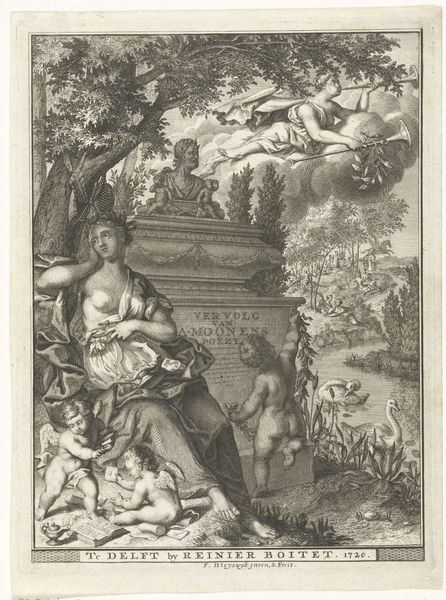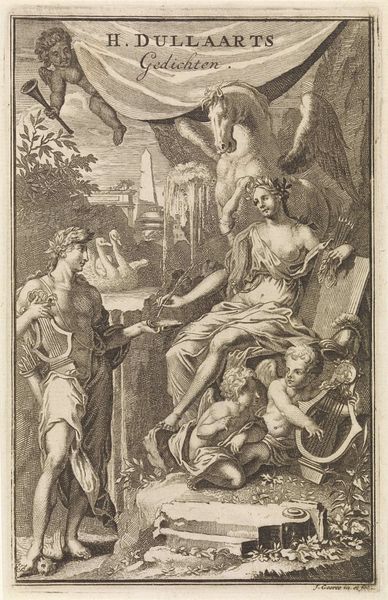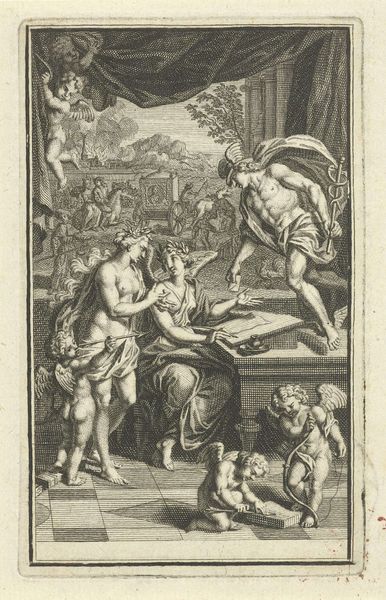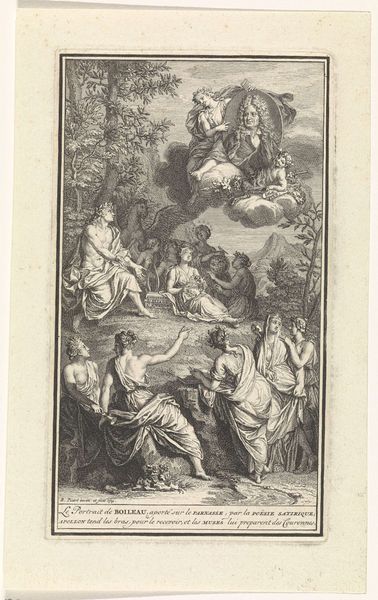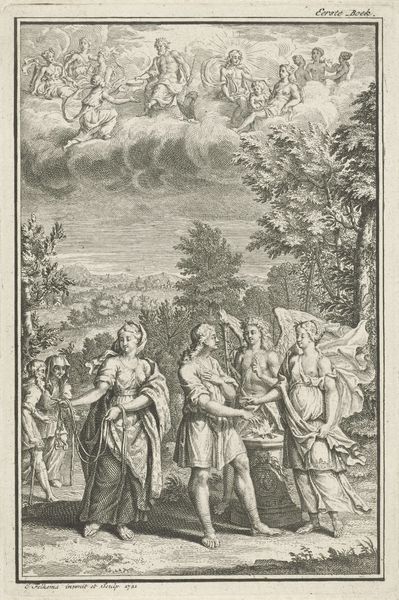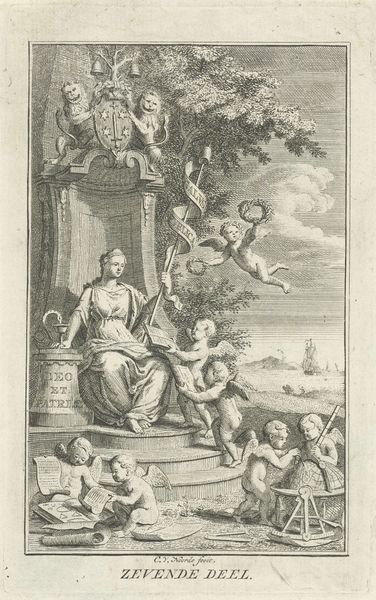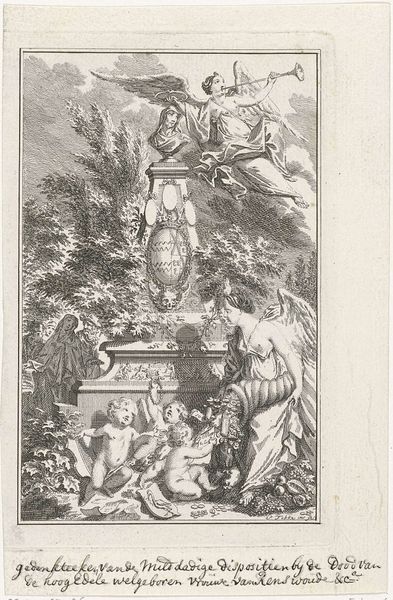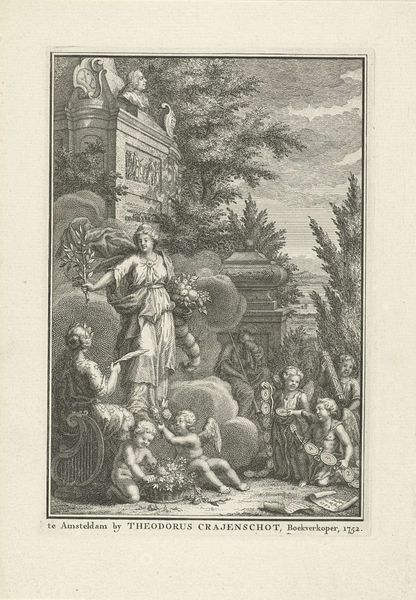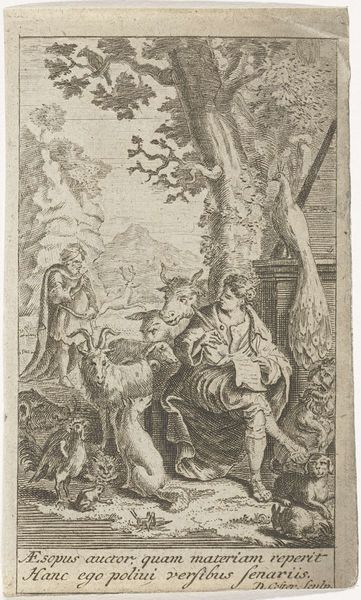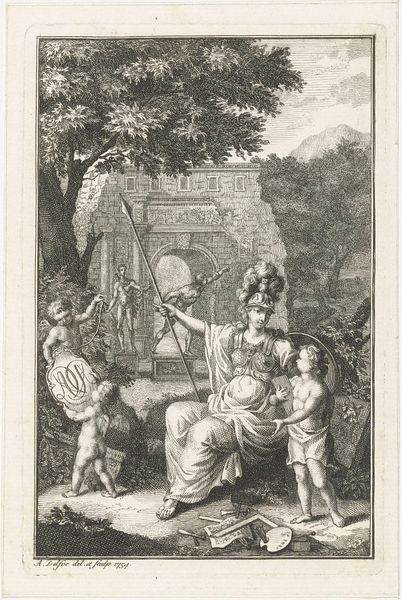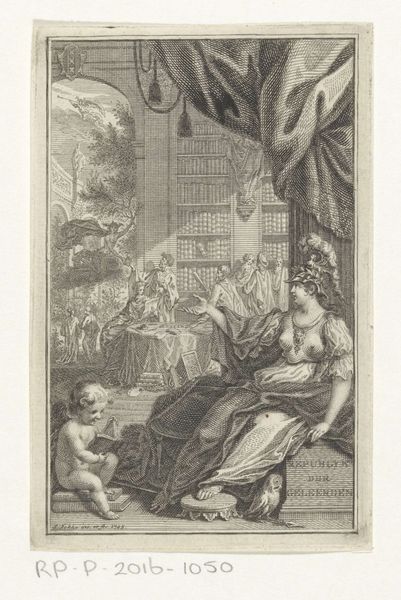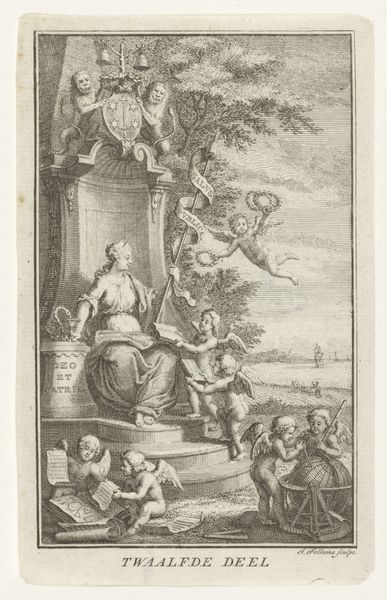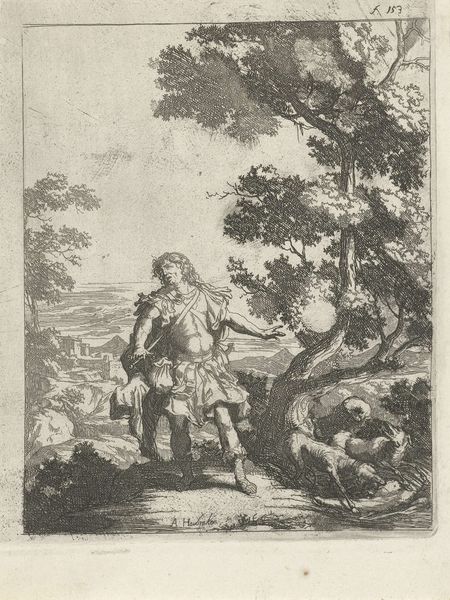
print, engraving
#
portrait
#
allegory
#
baroque
# print
#
old engraving style
#
traditional media
#
figuration
#
line
#
pen work
#
genre-painting
#
history-painting
#
engraving
Dimensions: height 156 mm, width 57 mm
Copyright: Rijks Museum: Open Domain
This is Simon Fokke’s etching of a clergyman, made in Amsterdam around 1737. The portrait is framed by an elaborate allegory that invites us to meditate on the subject’s piety and erudition. The image creates meaning through a series of visual codes, cultural references, and historical associations. We see a weeping woman holding a crucifix, a skull representing mortality, and images alluding to religious instruction, such as the tablet displaying Jesus amongst the doctors. These were conventional ways of representing faith in the Dutch Republic, a society shaped by the Protestant Reformation. What is interesting, however, is that Fokke’s engraving was produced in a context of increasing religious tolerance. The inclusion of putti, or cherubic figures, and the landscape backdrop, both invoke a classical aesthetic more closely associated with the Catholic church. The ‘privilege’ mentioned in the inscription at the bottom refers to a form of copyright intended to protect the artist’s work. To understand this image better, we might look at the history of religion in the Netherlands or investigate the economics of printmaking. The meaning of art always depends on its social and institutional context.
Comments
No comments
Be the first to comment and join the conversation on the ultimate creative platform.
